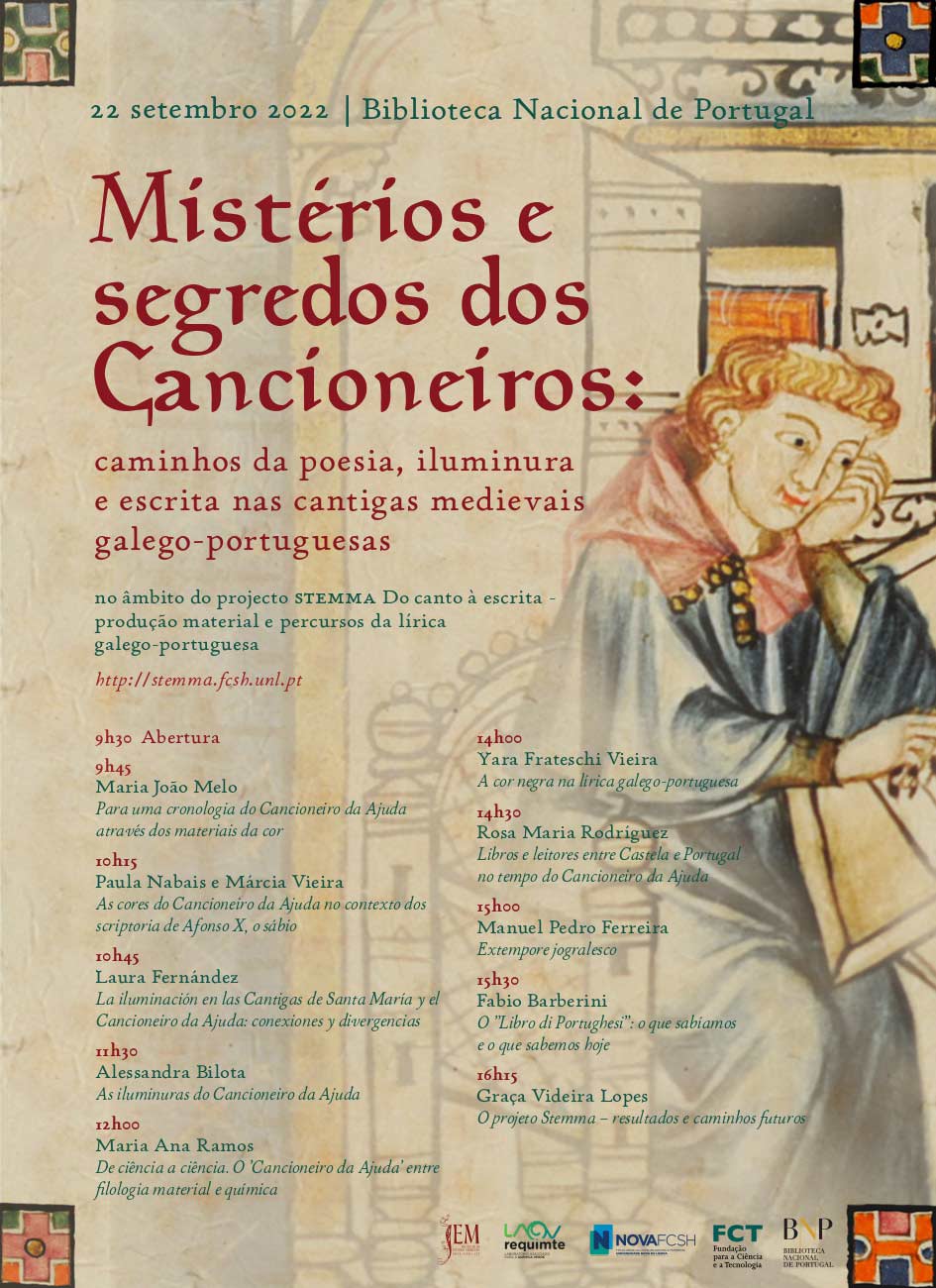International Conference: “Mistérios e segredos dos Cancioneiros: caminhos da poesia, iluminura e escrita nas cantigas medievais galego-portuguesas”
23.09.2022 | 9:30 - 18:00
Auditorium of the National Library of Portugal, Lisbon
Free entrance

The “Stemma project – From Song to Writing. Material production and paths in Galician-Portuguese lyrical song” sets out to better understand both the parameters of the passage of Iberian troubadour song to writing (agents, dates, places), and the unknown subsequent path of the manuscripts (including those since disappeared), especially the role that important figures of the Portuguese and European Renaissance humanism, such as Miguel da Silva (c. 1480-1556) or Angelo Colocci (c. 1467-1549) played in this stemma (a tree or family of interrelated manuscripts).
The historical and cultural importance of these manuscripts, especially the three great song books (in the Ajuda, National and Vatican libraries) and some fragments of other manuscripts that have survived to our days, contrasts strongly with the lack of knowledge about almost every aspect of their production, transmission and subsequent course.
Thus, this project focuses on troubadour manuscripts, as precious and fragile testimonies of the Iberian Middle Ages, approaching them from two different but complementary methodologies:
(1) The materiality of the Chansonnier of Ajuda and similar codices
An innovative and multidisciplinary approach, which includes the molecular analysis of the illuminations and writing inks of the Chansonnier of Ajuda, enabled the determining of the precise composition of the inks – identifying pigments, dyes, binding agents and other compounds, such as fillers (additives). By accurately characterising the inks in context, this made it possible to propose chronologies for the usage of dyes in other medieval European manuscripts.
(2) Italian codices and their medieval matrix
The similarities, but also the problematic relationships, of the Chansonnier of Ajuda with the two other surviving chansonniers, and all three collective with the Vindel and Sharrer scrolls, led to the contextual and historical study of all the manuscripts, their key characteristics, owners and paths, accomplished not only through careful analysis of the manuscripts themselves but also through systematic research in archives and libraries
As regards this latter project dimension, we carried out both the internal analysis of the surviving manuscripts, seeking out the characteristic physical features in the texts capable of providing information about their production and copying, and exhaustive research in libraries and archives, particularly those related to key figures in the Italian and Portuguese Renaissance who played a proven role in the preservation of the Galician-Portuguese Song.
This congress is financed by national funding through the FCT – Fundação para a Ciência e a Tecnologia, I.P., under project PTDC/LLT-EGL/30984/2017 – PI Graça Videira Lopes (IEM-NOVA FCSH), Co-PI Maria João Melo (NOVA School of Science and Technology | FCT NOVA).
